Kingdom Hearts is, famously, one of the series with the most complex plot in gaming, full of twists and turns and small details which can be difficult to follow. Consisting of over ten games in total already, spread over half a dozen different consoles, from the Game Boy to Nintendo Switch and including mobile exclusives and every single Sony console generation, each game having its own unique mechanics, the ever so enticing presence of iconic characters from Disney and the Final Fantasy franchise and more hidden secrets than different characters’ hearts inside of Sora’s.
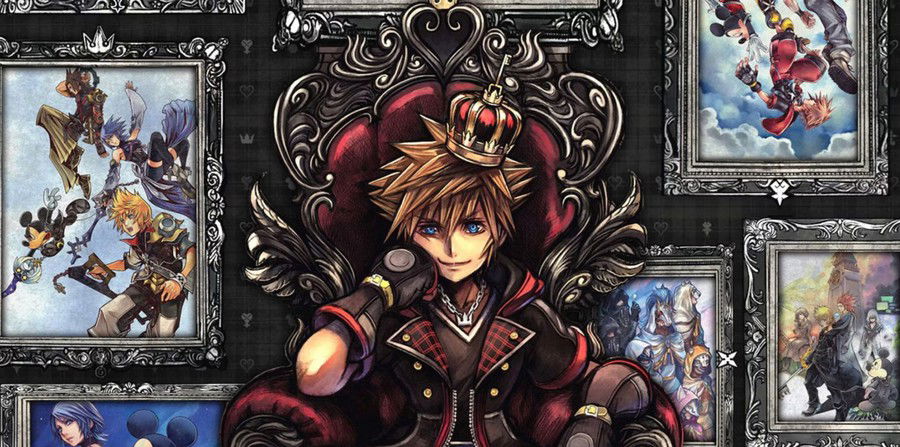
Time traveling and Data versions of characters and their hearts have also become such recurring themes and each and every piece of content, including games that in other IPs would be considered simple spin-offs, bring information and plot points which are vital to the story and to understand everything that’s going on, and the exact chronology of the franchise is still one of the most confusing points even to the most invested fans. So, down below we brought you a definitive and complete guide to Kingdom Hearts’ chronology, including absolutely everything released up until May 2024, to make sure there are no questions left!
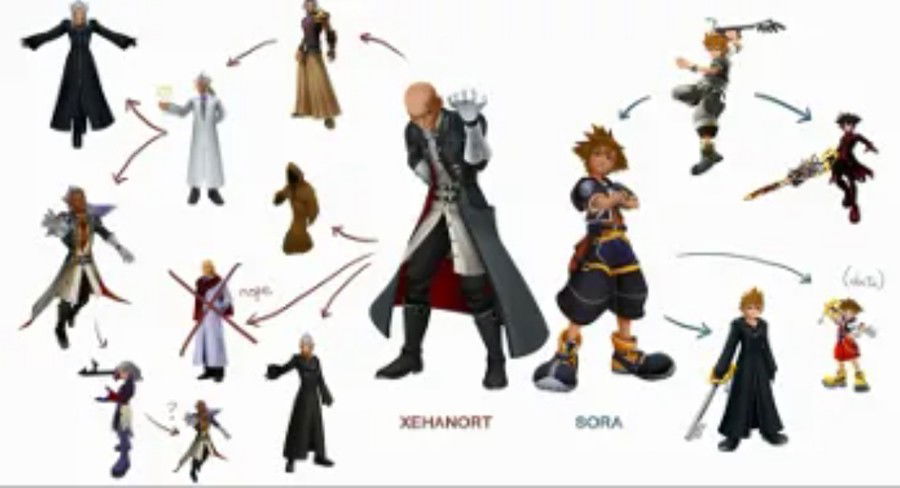
Before we begin, it’s important to remark that, even though playing the games in chronological order can be a good idea if you’re already familiar with the franchise, it’s a terrible one if it’s your first time playing it! The sheer amount of information and concepts which will not make the least amount of sense and will be thrown at you if you play like this for the first time is absurd, so the best option for new players and fans is really to follow the release order for the games, and go learning about and digesting the plot and all of its wild points little by little, as it evolves in depth and complexity.
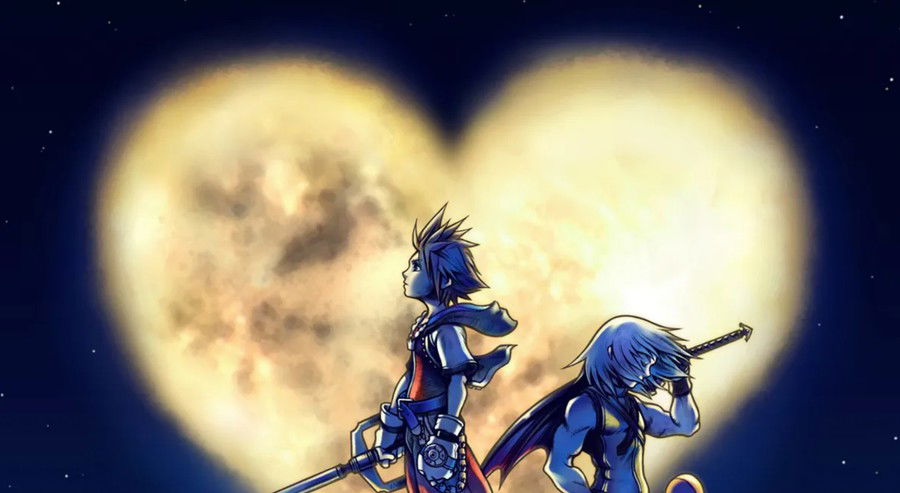
The entire world building so far in the Kingdom Hearts franchise can be divided into three great moments, and the games are then divided among them according to the narrative aspects behind the plot. They are: The χ Series, The Dark Seeker Saga and The Lost Master Arc.
χ Series
Being pronounced “chi” or “ki”, the χ Series encompasses the games which take place in the distant past, during the so-called Age of Fairy Tales, and tell the story of the worlds, both the original ones from Square and a few Disney ones, up to the moment in his youth in which Xehanort, the first great villain of the saga, decides to devote his life to chasing the Darkness.
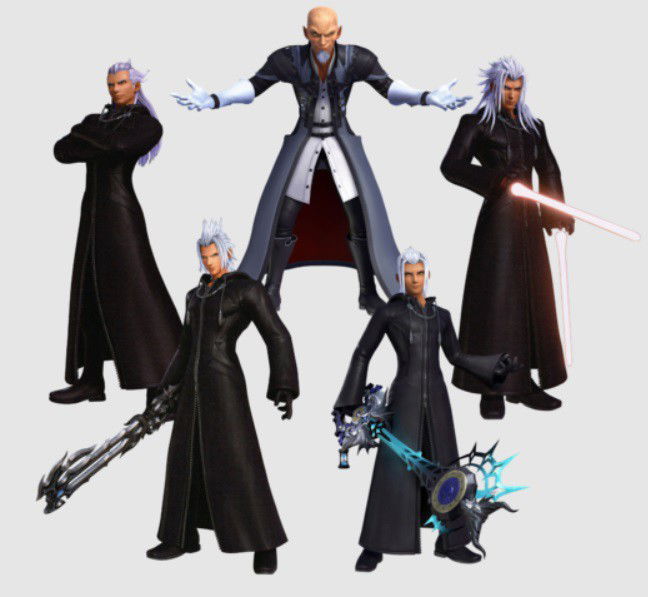
Kingdom Hearts χ/Unchained χ/Union χ and Back Cover
To reinforce the argument that the KH saga has a confusing storyline, we have as the oldest chronological point basically three games and one cutscene movie, which are actually just one story.
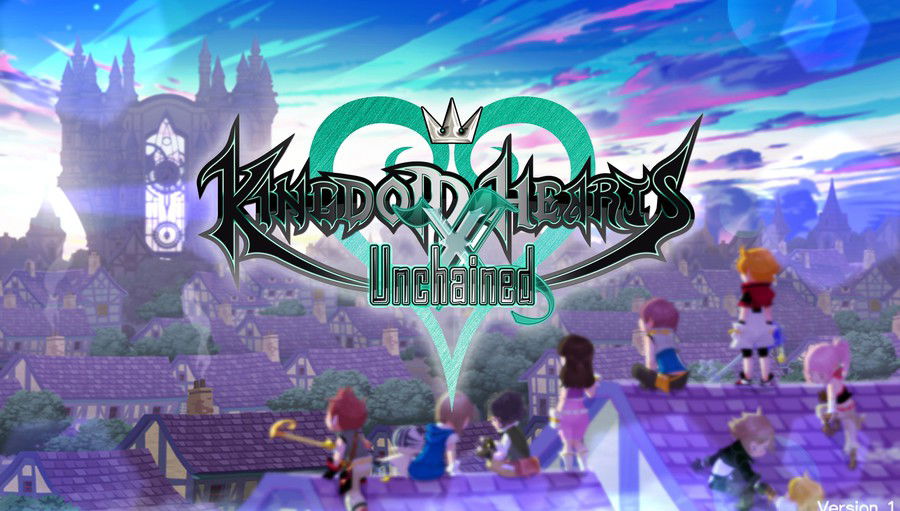
Initially, Kingdom Hearts χ was released, exclusive to PC browsers and to Japan. Two years following its release, Kingdom Hearts Unchained χ followed, a version of its predecessor which was now launched for iOS and Android and was available around the globe, and that would still go on to get two more remakes, resulting in the game’s definitive edition, Kingdom Hearts Union χ, and the “cutscene movie” version which accompanies the complete pack of every game in the series, to retell the crucial events of its plot so that some parts in KH3 would make sense to those who didn’t play or didn’t remember well the mobile game: Kingdom Hearts Union χ - Back Cover.
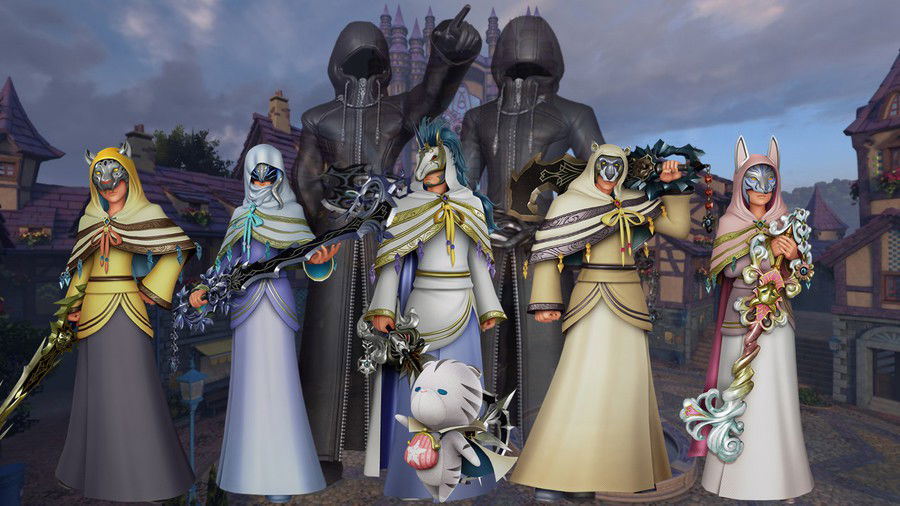
The game tells the story of the wolds before the Keyblade War, a terrible war which is referenced a lot throughout the other installments in the series and was responsible for decimating the overwhelming majority of the Keyblade Masters from this age, while they were still a bunch of young people, split into six Unions in Daybreak Town, in training under the Foretellers, apprentices to the MoM, the Master of Masters, to become actual Keyblade Masters.
Due to being released when the original series was well into its story being told, the game is full of references to every game that came before it, and reveals the origins of several well-known characters which had appeared previously (or that, chronologically, would only appear in the future), and also establishes explanations to matters introduced to us and to the story for the first time in previous installments, such as the cloaks worn by Organization XIII and the identity of some of the Nobodies themselves before becoming who they became, up until the origins of Darkness, with a capital D.
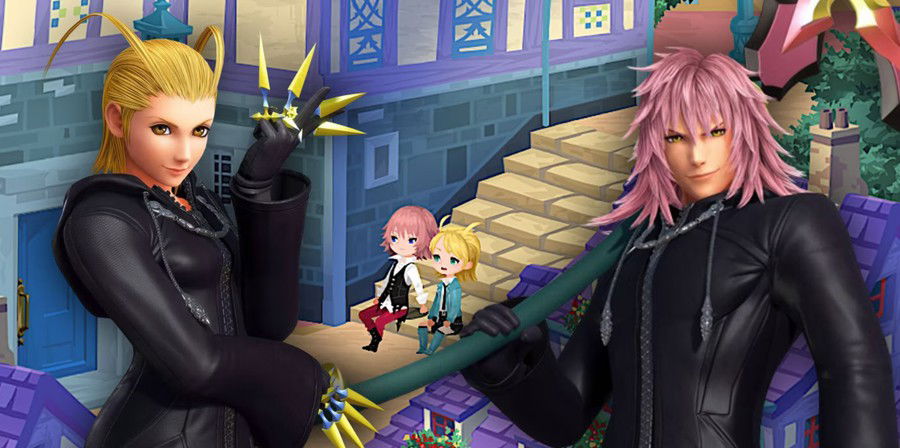
Kingdom Hearts Dark Road
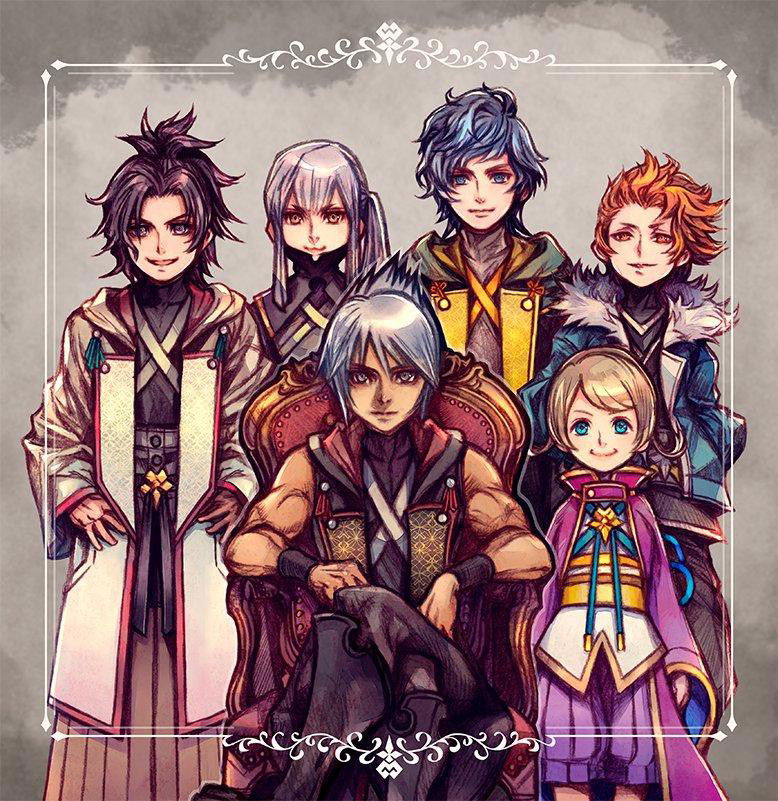
Dark Road is the game which gathers together pieces of information we already had and tells us the missing ones from the life story of Xehanort, and allows us to understand his origin, goals, travels in time to give instructions to his own younger self and all of his machinations once and for all, and kicks off one of the most meaningful friendships in the saga, one continued and ended in future games: Xehanort and Eraqus, two Masters of the Keyblade. It also reveals some of the biggest mysteries in the series - such as how Ventus ended up in Land of Departure and became an apprentice to Eraqus and friend to Terra and Aqua.
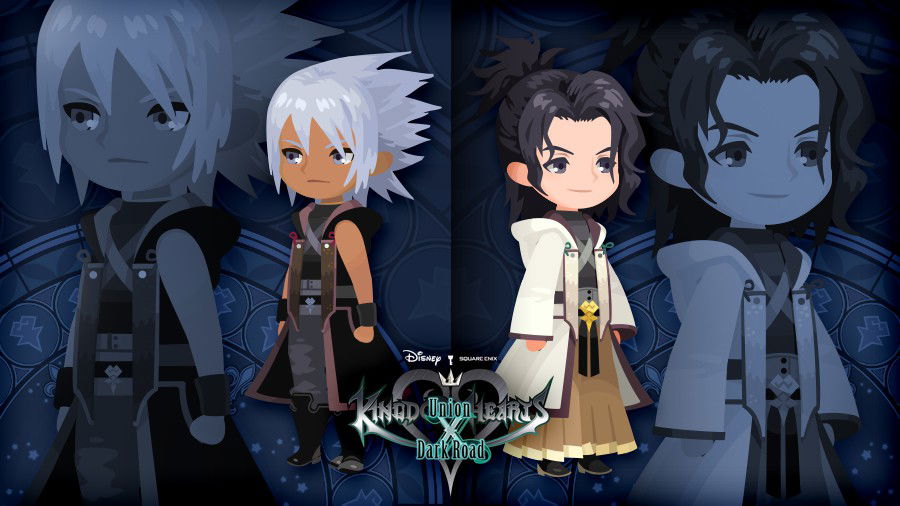
For now, we have only these two titles situated in the Age of Fairy Tales, both mobile games with the objective of adding to the franchise’s world building. Dark Road ends when the “first part” of Xehanort’s plans conclude, and the villain’s story is concluded in the first true “Arc” in the saga.
Dark Seeker Saga
The Dark Seeker Saga, or Xehanort Saga, is referenced by Nomura, the franchise’s director, as “the first phase of Kingdom Hearts” and encompasses the games telling the events and plans from Xehanort which ultimately led up to the battle of the Seven Lights against the Thirteen Darknesses, the called True Organization XIII, which reaches its climax in Kingdom Hearts 3.
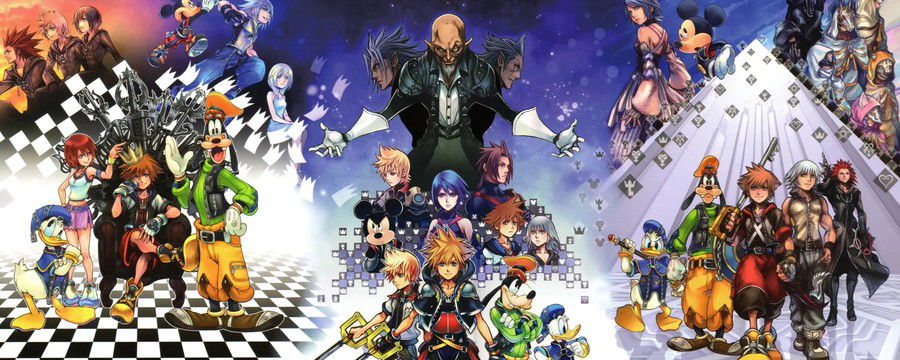
Kingdom Hearts: Birth by Sleep
Released in 2010, Birth by Sleep starts a relatively short time after the ending of Series χ, and allows us to play through three perspectives: Ventus, Terra and Aqua, the three apprentices training under Eraqus to become Keyblade Masters.
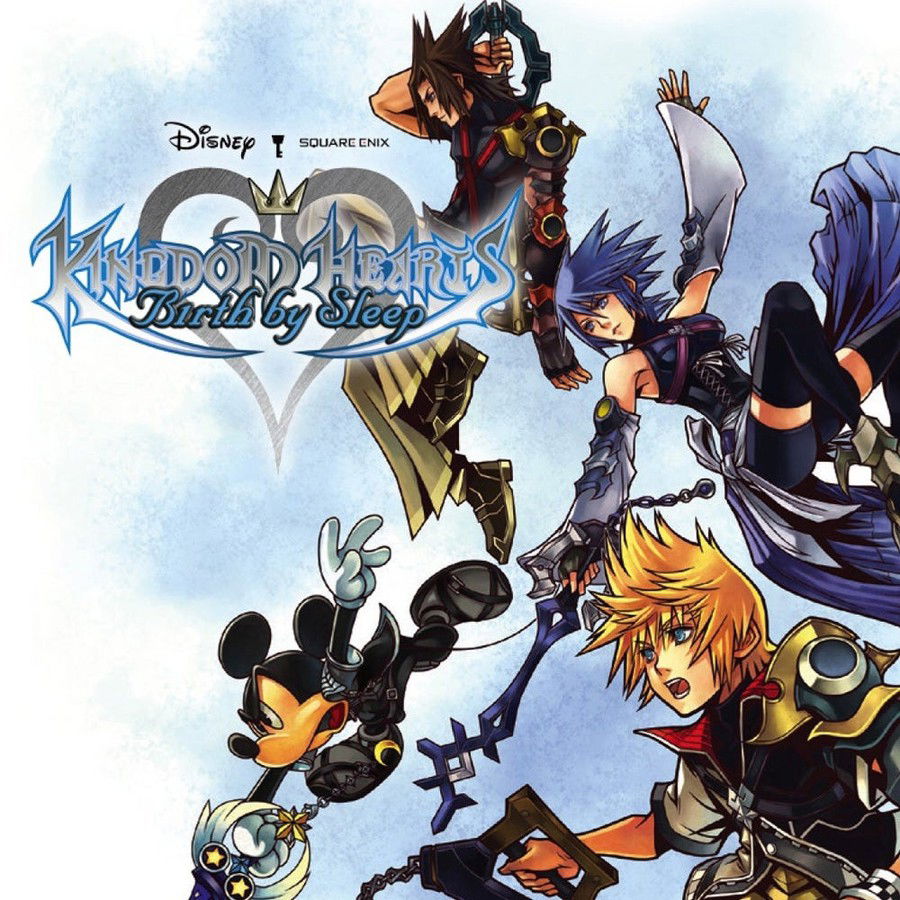
The game is divided into three parts, each one placing the player into the shoes of one of the three protagonists and telling the story around the same events through their perspective. Each one of them has a brief encounter with one the “original” trio’s members, Sora, Riku and Kairi, explaining where their ability to wield the Keyblade comes from, and by the ending the three storylines converge: Master Eraqus is killed, Terra loses both his conscience and his heart and has his body “stolen” by Xehanort, who assumes a new identity, Ventus loses his heart and his body enters a perpetual sleep state, and Aqua sacrifices herself to try helping her friends and ends up trapped in the Realm of Darkness, literally a separate world in which the Darkness prospers and dominates everything, filled with dangerous Heartless.
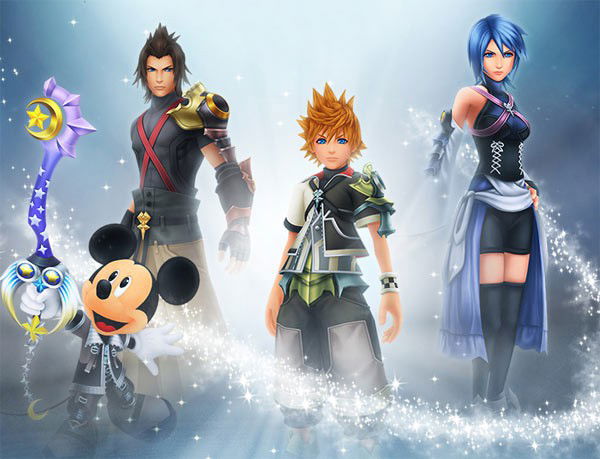
Kingdom Hearts 0.2 Birth by Sleep -A Fragmentary Passage-
Included in Kingdom Hearts HD 2.8 Final Chapter Prologue, the third collection of games in the saga, 0.2 is a brief chapter in Aqua’s story after her fall into the Darkness, which reveals to us that she played an important role in the events which happen at the ending of Kingdom Hearts 1, helping Riku and Mickey to close the door to the Realm of Darkness and saving Riku from being hit by the Heartless, falling deeper into the Darkness as a consequence.
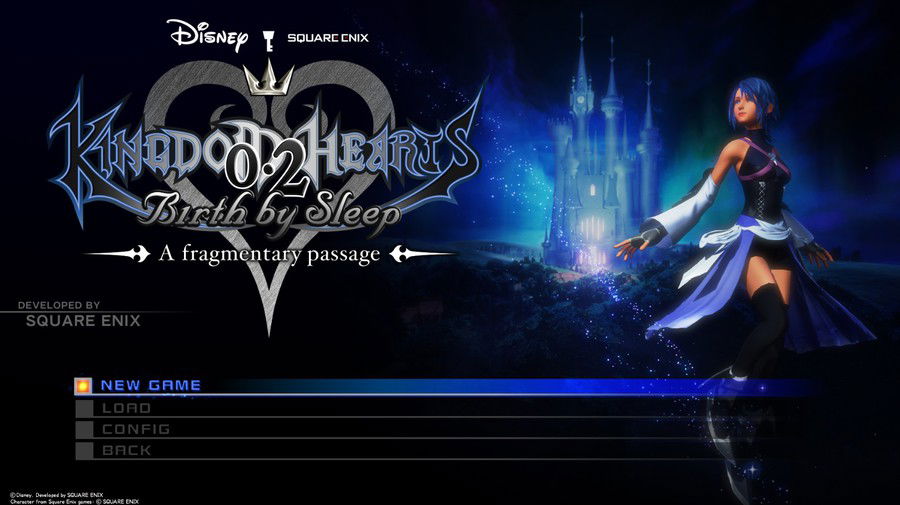
Kingdom Hearts
We finally got to the first game in the franchise! In 2002 was released Kingdom Hearts 1, the weird yet charming combination of Final Fantasy and Disney which conquered so many hearts around the world (pun intended), and we threw ourselves headfirst, accompanying Sora, Donald and Goofy at the start of their long adventure fighting against the approximately thirty-eight different forms Xehanort takes.
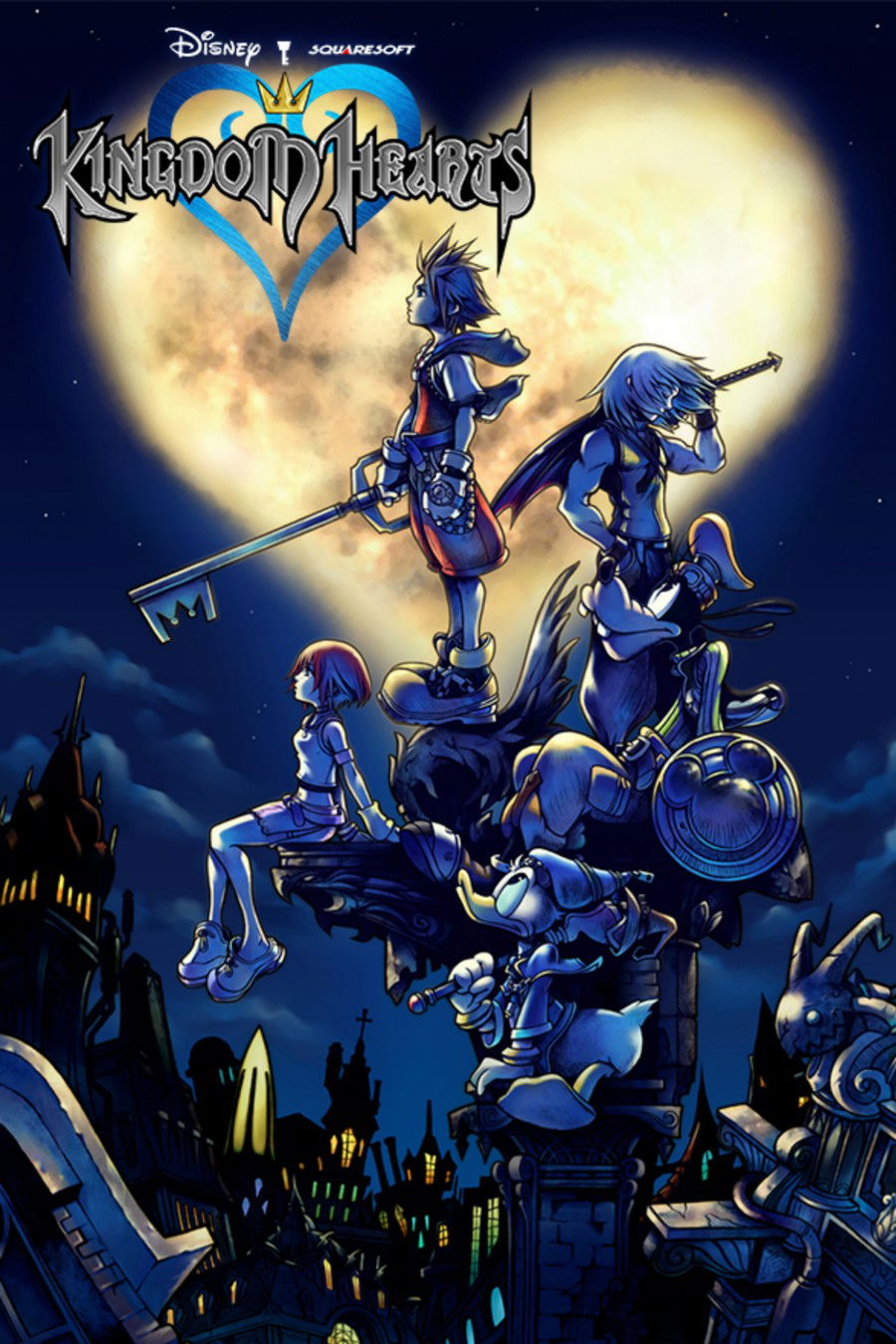
The game goes from the point right before in which the Keyblade first appears to Sora, starting off with the peaceful introduction of the main trio in their home world, Destiny Islands, and goes up until the defeat of Ansem, who is the Heartless to Xehanort, created after he took control of Terra’s body and the identity of his former master, the original Ansem The Wise.
Kingdom Hearts: 358/2 Days
This game and the next one share a period of time, and one of them happens during the other, but since Days starts first back in chronology, we’ll talk about it first!
Released to the Nintendo DS in 2009, Days is the game that properly introduced to us and built onto the lore behind the group of antagonists that first appeared in Kingdom Hearts 2 (it still hasn’t come around in the chronology, but the game was released in 2005), with a heavy focus on Axel, Roxas and the other members of Organization XIII, the new villains/anti-heroes who set their own plans of control over the Kingdom Hearts in motion following Ansem’s defeat.
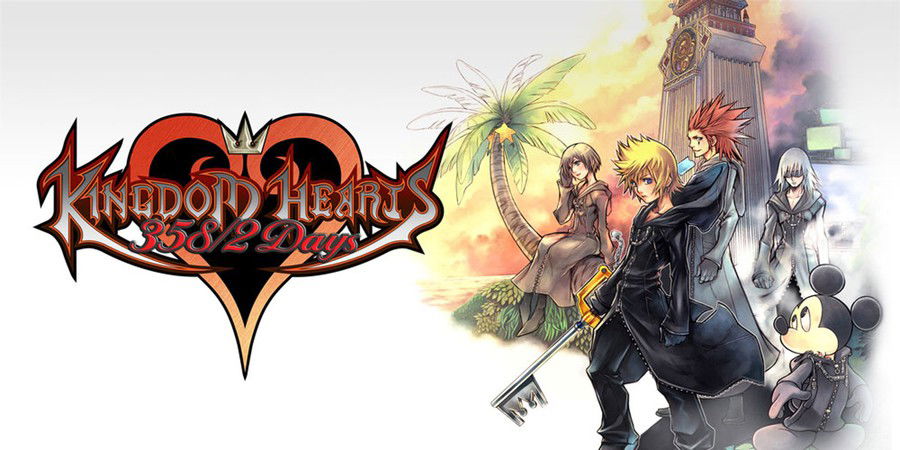
This group, led by Xehanort’s Nobody, their objectives and internal politics are the focus of the game, which starts at the point in which Roxas, Sora’s Nobody, comes into existence, when Sora releases all the hearts inside himself in Kingdom Hearts 1’s final sequence and becomes a Heartless, and goes right up to the beginning of Kingdom Hearts 2, narrating everything that happened and led to Roxas deserting from the Organization and set in motion several other plot points going forward.
The gameplay works in a mission system which generates some quite controversial opinions about the game, but the enchanting Soundtrack, captivating characters who are well-developed, each having a unique personality, and one of the most emotional storylines in the franchise, revolving around a new character, Xion, give the game a certain charm.
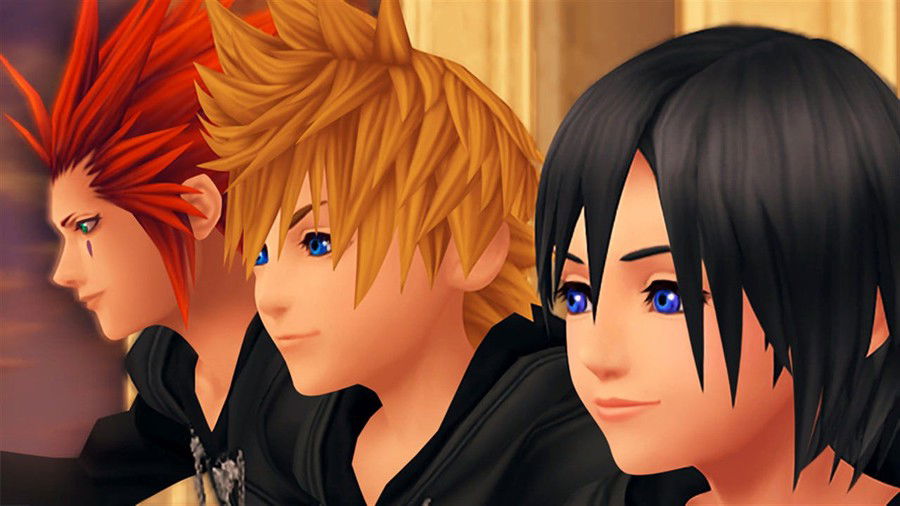
The next game in our timeline, as mentioned above, happens within a period of time fully included in the story of 358/2 Days.
Kingdom Hearts: Chain of Memories/Reverse Rebirth
Dear to few fans’ hearts and to many the most controversial and less played game in the saga, CoM was released in 2004 to the GameBoy Advance and sets itself apart from every game that came before it by having entirely different mechanics, one where the Keyblade strikes and Sora’s Magic Skills are used and cast through cards, an aspect which did not please many fans.
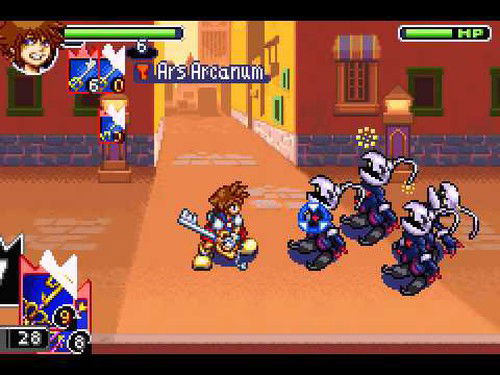
The story follows our three heroes from the exact point in which KH1 lets off: Sora, Donald and Goofy are trying to get back to a familiar world when they come upon Castle Oblivion, the “corrupted” version of the world where Aqua, Terra and Ventus are from, and when Ven’s heartless body is hidden and being looked for by a part of the Organization XIII, sent to the Castle with the objective of retrieving him. Because of the memory manipulating powers of a new character, Naminé, Kairi’s Nobody, even though they advance to each level in the Castle and defeat each Org. XIII member they come across, the trio loses part of their memories, and the game ends with them willfully being put into a dormant state, so that Naminé can get their memories back in order.
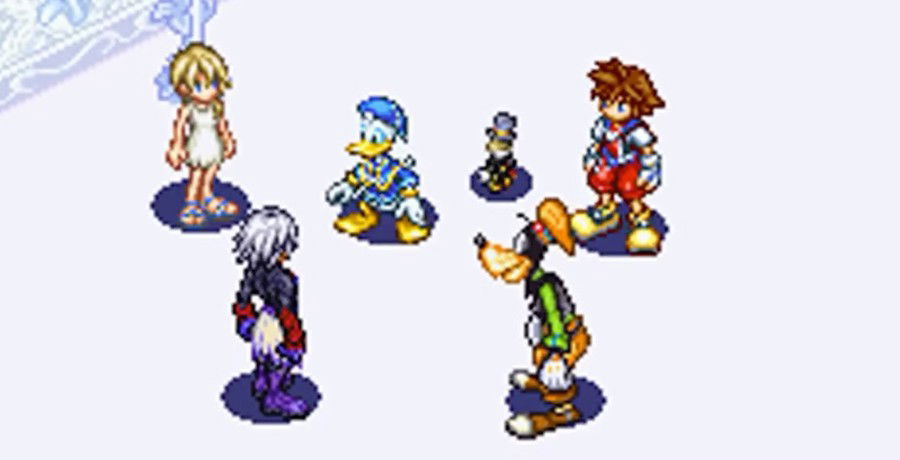
Reverse Rebirth is the mode unlocked after finishing Chain of Memories, where you also go through Castle Oblivion, but this time as Riku, fighting different Organization members and filling up some blank spaces between KH1 and KH2.
In 2008, a new version was released, Kingdom Hearts Re: Chain of Memories, to the PS2, with the same battle system but completely re-done graphics.
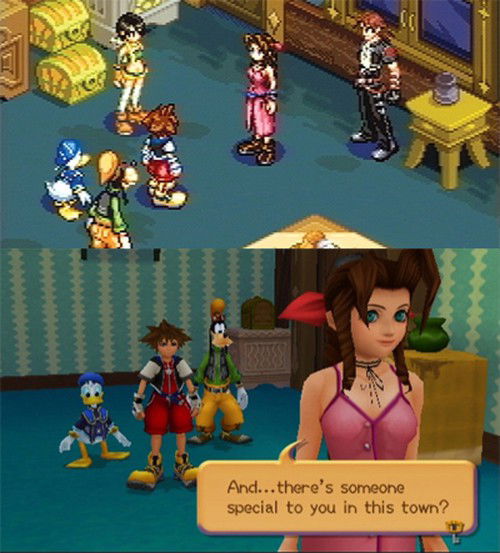
Kingdom Hearts 2
A year after CoM, in 2005, we got the second numbered entry in the saga! KH2 tells the story from the ending of Days, starting with a prologue in which we control Roxas instead of Sora, during his last days of “independent life”, as Sora still hasn’t woken up from the sleep Naminé put him to at the ending of CoM. Roxas, due to being his Nobody, needs to get back together with Sora’s heart so that he can wake up and, when it happens, we embark in another adventure with Sora, Donald and Goofy, this time fighting against Organization XIII’s Nobodies and their leader, Xemnas, Nobody and “other half” of Xehanort.
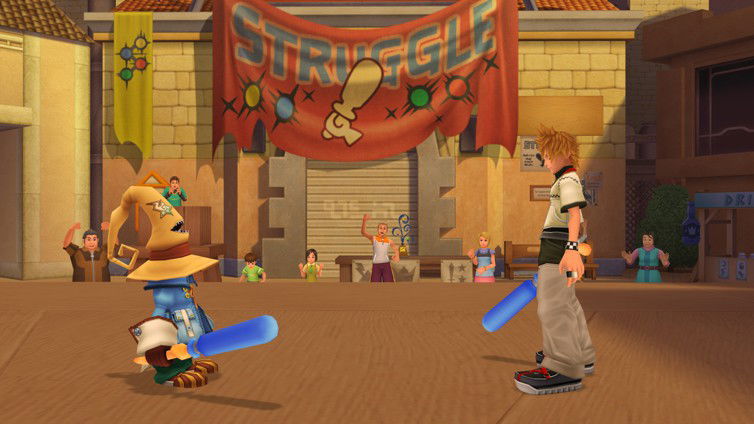
The game ends in a bittersweet tone, both with a “happy ending” sequel of cutscenes where everyone meets back in Destiny Islands, alive and happy, and even Roxas and Naminé are reunited through Sora and Kairi, but also with a hook to a sequel: A scene in which Sora, Riku and Kairi get a message from King Mickey in a bottle.
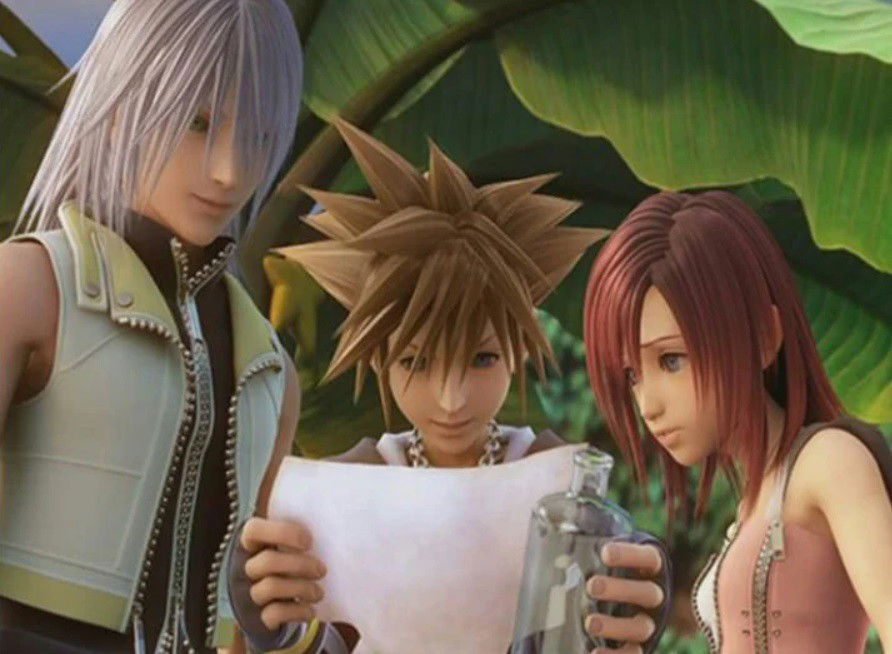
Many fans believed, at the time, that this would be an indication that Kingdom Hearts 3 was close, but the waiting for us to see this continuation would still be very long.
Kingdom Hearts: Coded
Released in 2009 as Kingdom Hearts: Coded, and then in 2011 as the Remake Kingdom Hearts: Re: Coded, the game narrates some events which unravel soon after KH2’s ending: Upon revisiting his journals, Jiminy Cricket finds the phrase “Thank Naminé” written in them, alongside the mysterious quote “Their hurting will be mended when you return to end it”, and is certain that he has no memories of having written it.
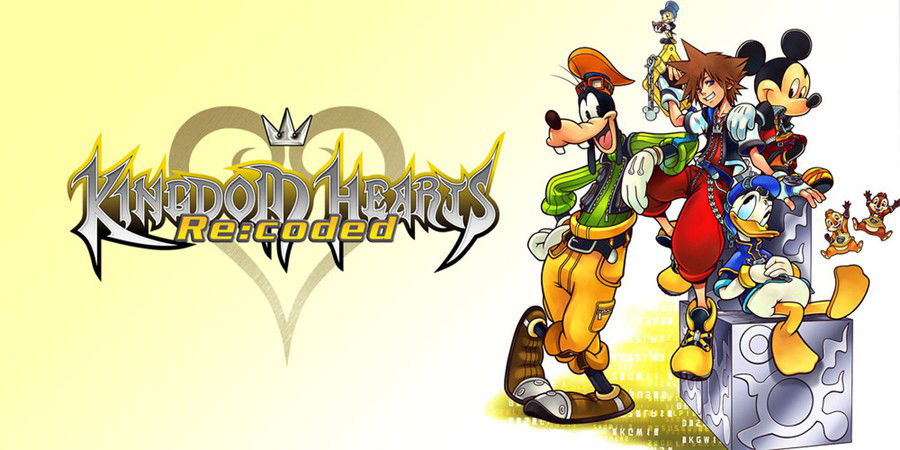
It’s the game that expands the most upon the concept of Data, introduced in previous installments: Jiminy takes the journal to King Mickey, who digitally scans it and sends a version of Sora made of Dara into it, seeking out an answer about who wrote that and what it all meant inside the digital journal, fighting against bugs and restoring the real events. The objective of the game is to reveal that Sora is the key that connects everything, due to being the link between the Days Trio, Roxas, Axel and Xion, and the only person capable of saving the Birth by Sleep Trio, Aqua, Ventus and Terra, from their unhappy endings.
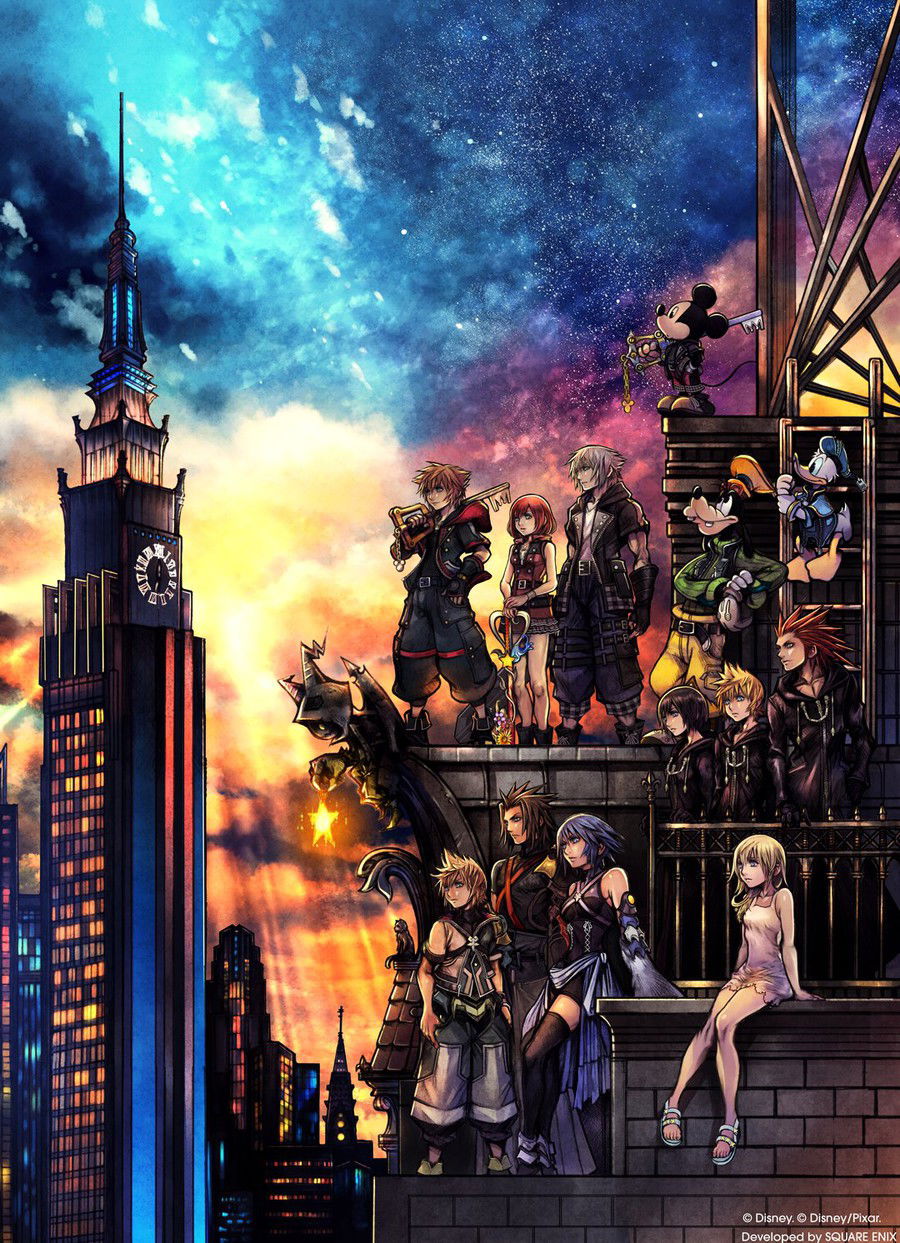
This game exists mostly to give context and lay a setup to the storyline in KH3, and ends with King Mickey sending out the message in a bottle which Sora gets at the end of Kingdom Hearts 2, alongside Riku and Kairi, and also with the King learning from his Master, Yen Sid, that by defeating both Xehanort’s Heartless and Nobody, now he had returned in his “complete” form, and the original villain was back.
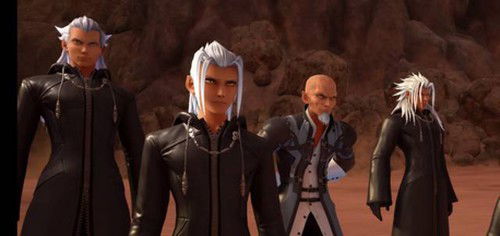
Kingdom Hearts: Dream Drop Distance
Another game released intending to fill up blanks in the story and laying out the base of some concepts in preparation for the third numbered entry, Kingdom Hearts DDD or 3D, released in 2012 for the 3DS starts to tell its story following the ending of Coded and the last cutscene in KH2, with Sora and his friends getting King Mickey and Yen Sid’s call and going to them, to be trained for the final fight against Xehanort.
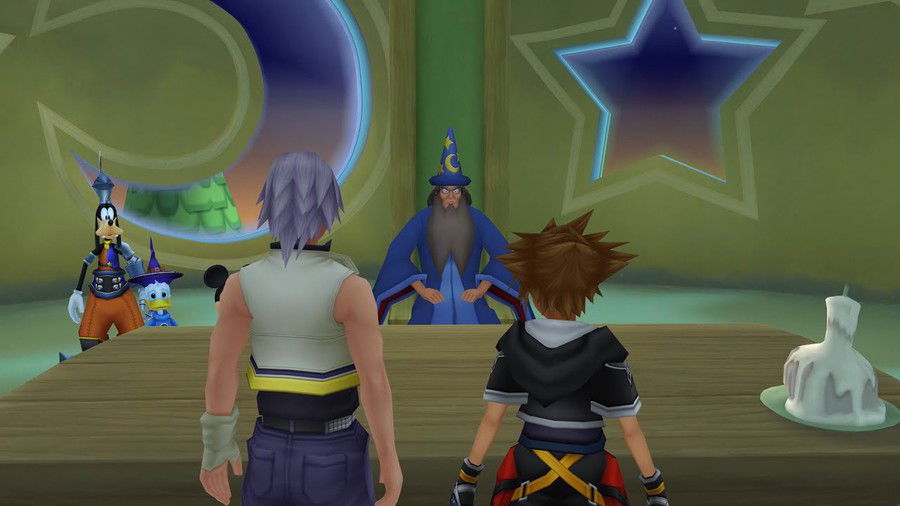
Yen Sid applies to Sora and Riku the Mark of Mastery Exam, the one we see Aqua and Terra also taking part of at the beginning of Birth by Sleep so that they could become true Keyblade Masters and have access to every power needed to reunite all of those who must take their place in the battle, in Light’s side against Darkness.
In the game, which divided opinions with the Drop System gameplay but overall pleased many fans with the Dream Eaters, the addition of a world based on the acclaimed The World Ends With You, another title from Square, and the possibility to, for the first time since Reverse Rebirth, control everyone’s favorite, Riku, in parts of the game, accompanying the unraveling of the exam.
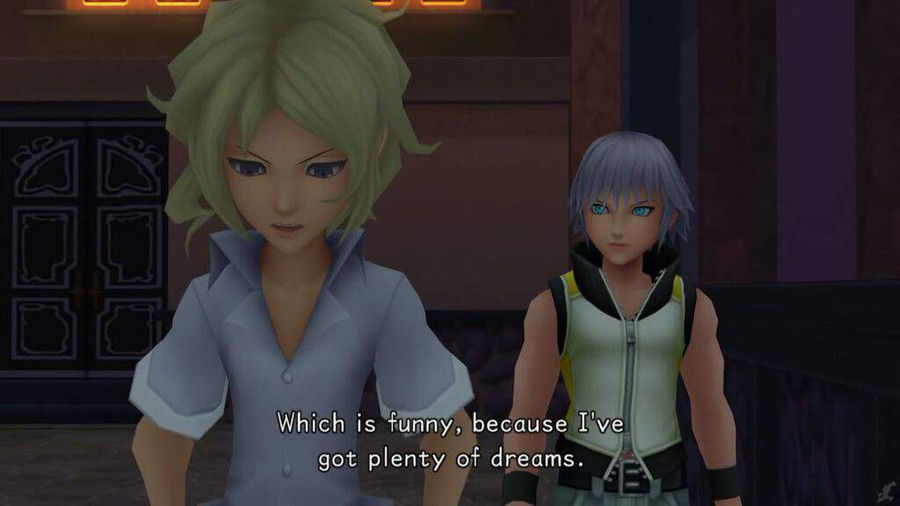
Simultaneously, our heroes find out about Xehanort’s plans of creating the New Organization XIII, consisting of the 13 Darknesses, to create the χ-blade and use it to summon Kingdom Hearts, harnessing its power to himself. The game ends with Sora failing the Mark of Mastery and being captured by the villain, needing to be rescued by Riku and to figure out another way to get the Power of Waking, needed to reunite the 7 Lights and face Xehanort in Kingdom Hearts 3
Kingdom Hearts 0.2 Birth by Sleep -A Fragmentary Passage-
Here the second half of 0.2 comes into place, which starts at the point in which Riku comes into the knowledge of what happened to Aqua and the part she played saving him in the ending of KH1, and everyone divides themselves into what they will be doing at the start of KH: Mickey e Riku going to search for Aqua in the Realm of Darkness, Kairi and Lea (Axel’s previous self) training to wield their newly acquired Keyblades and Sora going after the Power of Waking.
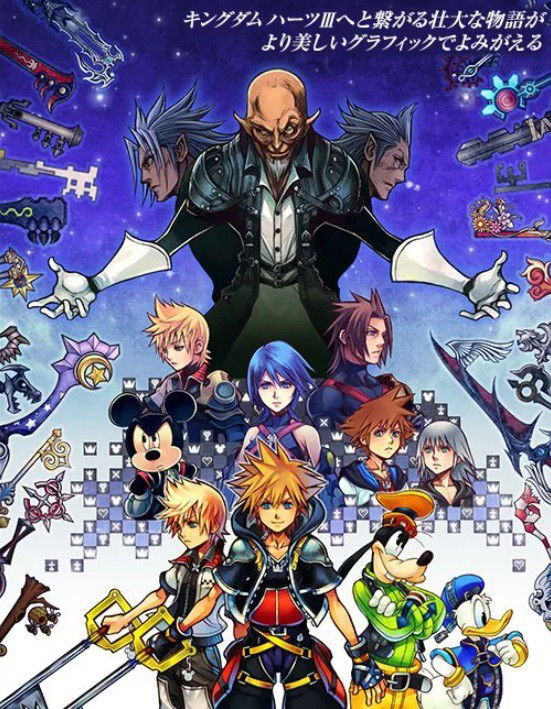
Kingdom Hearts 2.9
In 2019, six years after the first announcement for the game, the highly anticipated Kingdom Hearts 3 was finally released. KH3 is the conclusion to the story we began to follow way back when, in 2002 with KH1, and starts at the exact point at which 0.2 ends. The game has an “introduction” which is, more than anything, a joke from the developers, playing with how long the game took to come out, and works more like a tutorial of the new features in it.
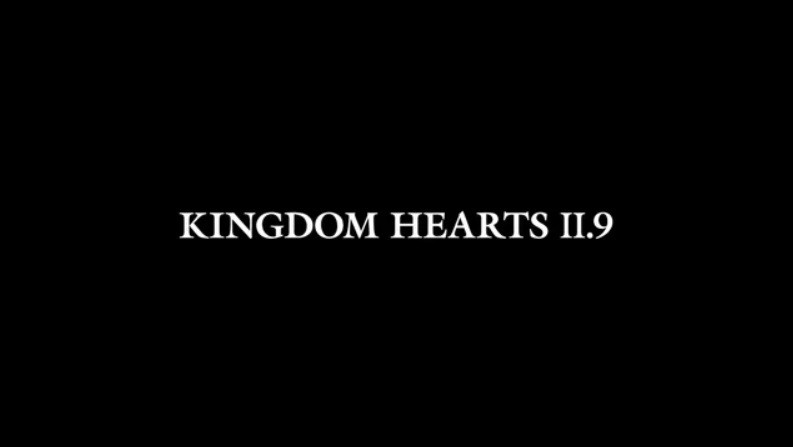
After all, due to the extensive period in which it stayed in development, KH3 was completely remade in another engine, when the team led by Tetsuya Nomura changed it from the Luminous engine to the Unreal Engine 4, and several improvements were implemented not only graphically speaking - the game has scenes which are better-looking and more well-made than Disney’s animations themselves, in worlds such as the ones from Tangled and Frozen, in which the graphic and animation style of the original movies match the style in Kingdom Hearts 3, and entire scenes are remade beautifully and inserted in the game’s plot - but also in gameplay.
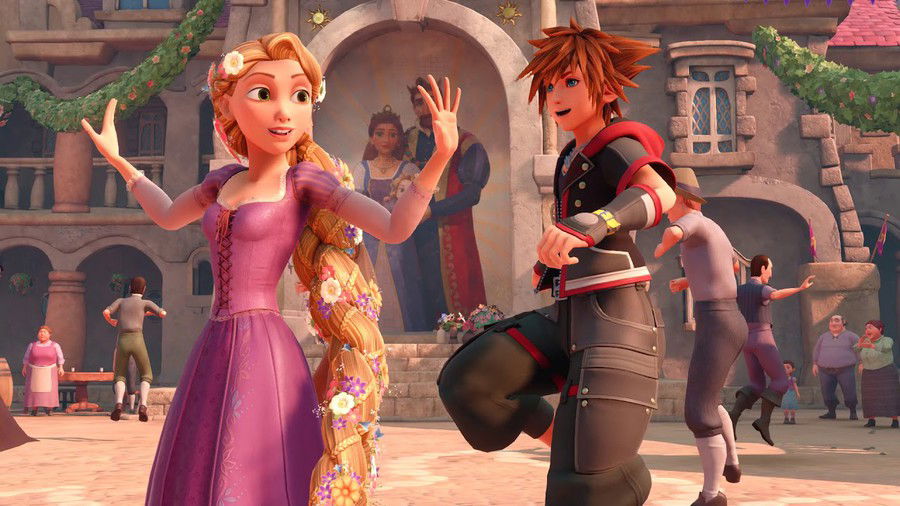
Now, every world is Open World, and has huge areas for you to explore controlling Sora, there are several new mechanics, some well implemented such as the vertical running in walls and the ship race in Port Royal, and a few questionable ones like the infamous Attraction Flows, but every one of them adding to the enhanced sense of dynamism in the gameplay, which was always a particularity of the franchise. All of this is presented to the player in Kingdom Hearts 2.9.
It consists, actually, of the first world and boss in the game: Olympus Coliseum and the Stone Titan. From this point forward, Kingdom Hearts 3 starts, putting an end to the Xehanort Saga.
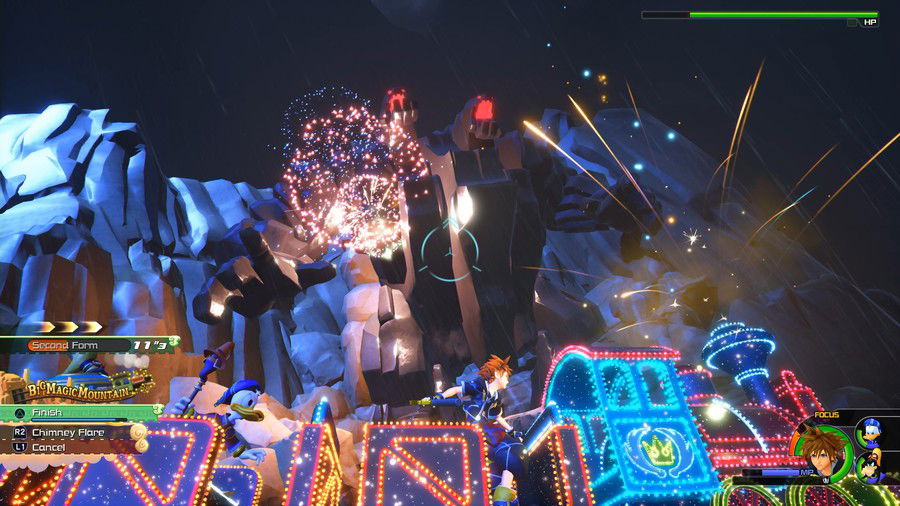
Kingdom Hearts 3
We accompany our Trio of heroes as they save every relevant character from the previous games, defeat others, and reunite the 7 Lights to fight against the 13 Darknesses, the True Organization XIII. We are reunited with old and dear characters such as Roxas and Xion, save previously condemned characters such as Ventus and Terra, and finally put an end to Master Xehanort and his plans to control the χ-blade and Kingdom Hearts. Xehanort dies at the end of the game, renouncing the evil he had caused, with the incentive of the heart of his best friend Eraqus, effectively ending his story.
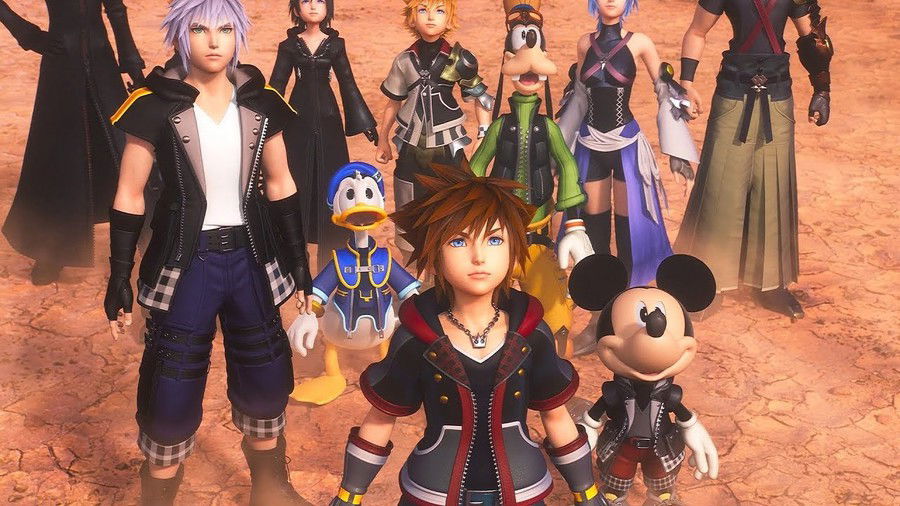
Towards the end of the battle, Kairi’s body is destroyed by Xehanort before his definitive death, and Sora uses the Power of Waking to save her, one last time, despite being warned of the dangers of doing so. And with this, we have the very beginning of the arc which follows the Dark Seeker Saga: Sora vanishes, losing his own heart and ending up in a separate reality.
Also in KH’3 final moments is when the story we began to follow at the beginning of this article comes into play: the last cutscenes in the game show us the Foretellers and Luxu - the real identity of the guy we knew as Xigbar or Braig up until now-, from the Age of Fairy Tales, apprentices to the extremely mysterious Master of Masters, reuniting at the Keyblade Graveyard to talk over plans which haven’t been revealed to us yet, and about the equally mysterious because otherwise it wouldn’t be Kingdom Hearts, black box that Maleficent and Pete spend the entire game searching for and which has been previously left under Luxu’s care by the MoM.
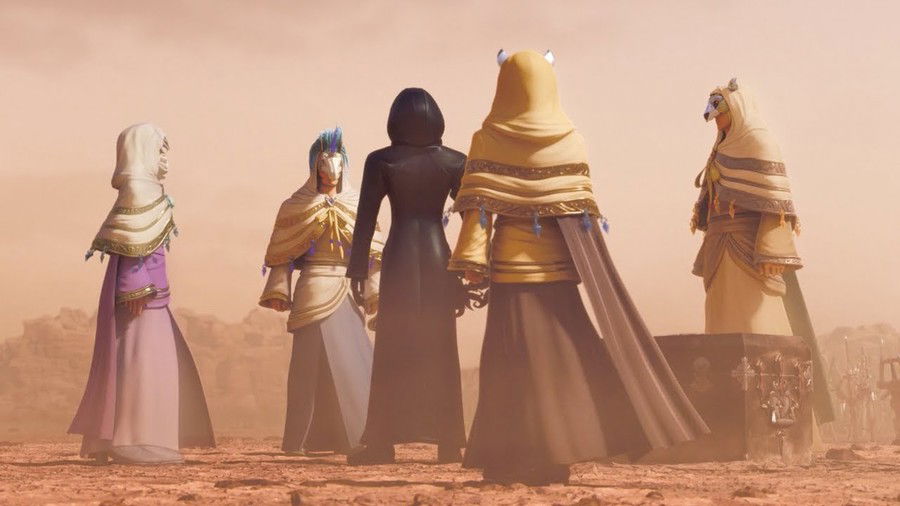
And, like that, the second great Kingdom Hearts saga, which is still in its early beginnings, starts.
Lost Master Arc
Kingdom Hearts 3 Re:Mind DLC
KH3’s DLC, released in 2020, connects the base game to the new game effectively in the new phase: As mentioned, Sora is successful in recovering Kairi’s heart, but loses his own in the process, and his friends, especially Mickey and Riku, try to save him. They follow a suggestion from the Fairy Godmother and find out Sora is in another dimension, called Quadratum.
https://cdn.cardsrealm.com/images/uploads/27142-192124128141152178141164170-1715882785.jpeg
The DLC covers the encounter and fight which Sora have in Quadratum with a new character whom we don’t know much about yet, except for the fact that he’s the protagonist in Verum Rex, a game that exists as a video game only inside the Kingdom Hearts world, Yozora, while Riku opens up a portal to Quadratum with the Power of Waking and goes there, to save Sora.
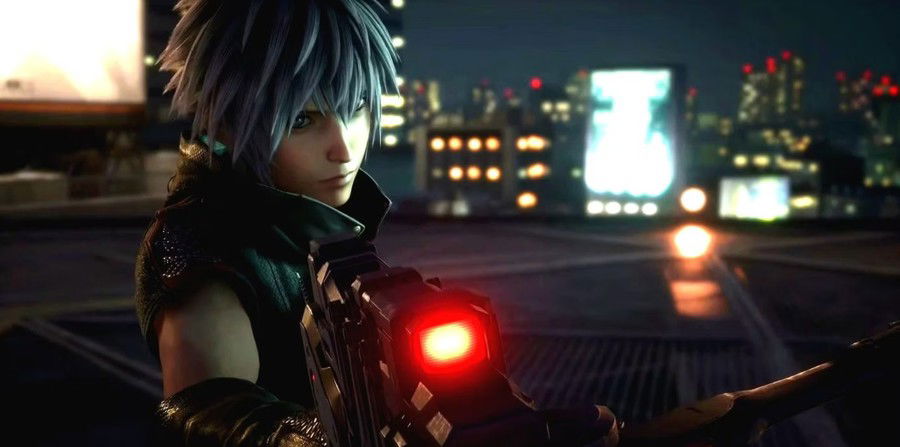
Kingdom Hearts: Melody of Memory
In the best and truest Kingdom Hearts fashion, this game is a huge change if compared to any previous entry because it consists of a rhythm game. However, also in the best Tetsuya Nomura fashion, it’s full of important and necessary lore.
The game follows Kairi’s memories, who has been put to sleep for a year while Ansem and his scientists look for clues to Sora’s whereabouts inside of her mind, as a suggestion from the Fairy Godmother.
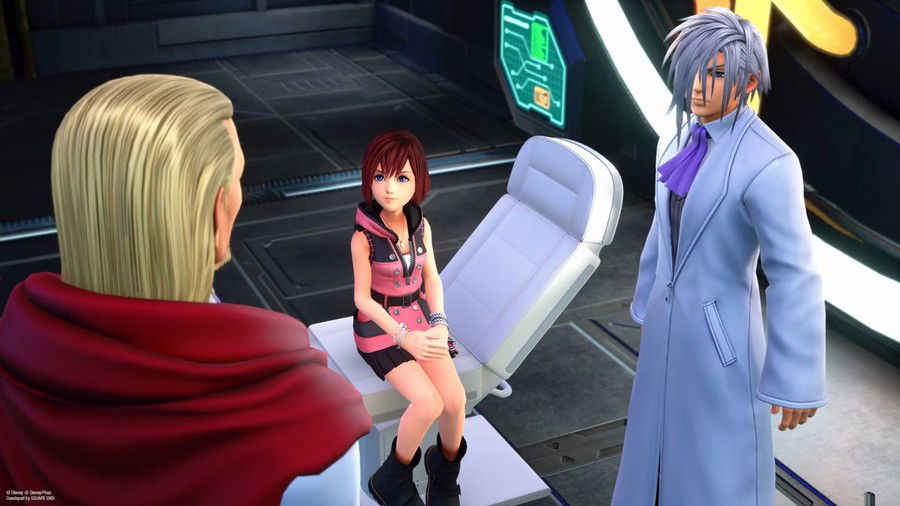
Eventually, they find out that there are three keys to Sora’s location, two of them being Riku and Kairi and the third being the Nameless Star, a new character still shrouded in mystery but connected to Yozora somehow. A “new” character is also introduced into the plot, through a cutscene which reveals that he is also in the same reality as Sora: The Master of Masters in the flesh.
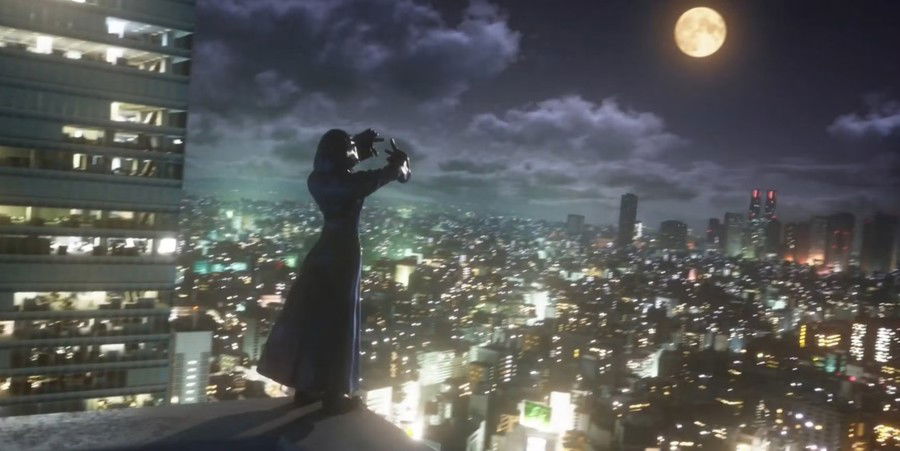
The game ends with Kairi continuing her Keyblade Master training under Master Aqua, while Riku goes to Quadratum to look for Sora and Mickey returns to the stage of the last battle with Xehanort, the place where he trained and became a Keyblade Master, and where the Foretellers and Luxu, who will play important parts from now on, are from: Scala Ad Caelum.
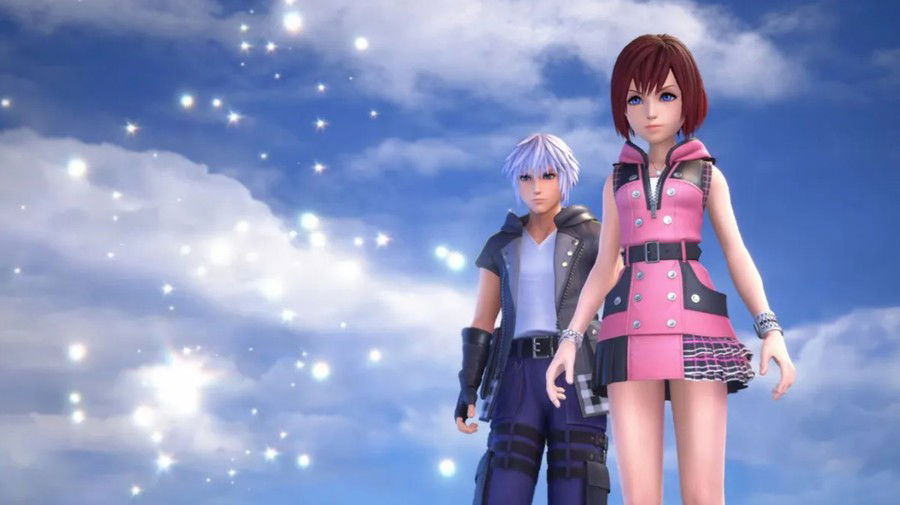
And What’s Coming Now?
What the future and Nomura are keeping in store for us is still a mystery, but the forums, groups and conversations among fans are filled with theories and predictions, and even we here at UmGamer have already spoken abouthyperlink(our theories and what we know about Kingdom Hearts 4}. And what if we get a spin-off where we play exclusively as Riku?
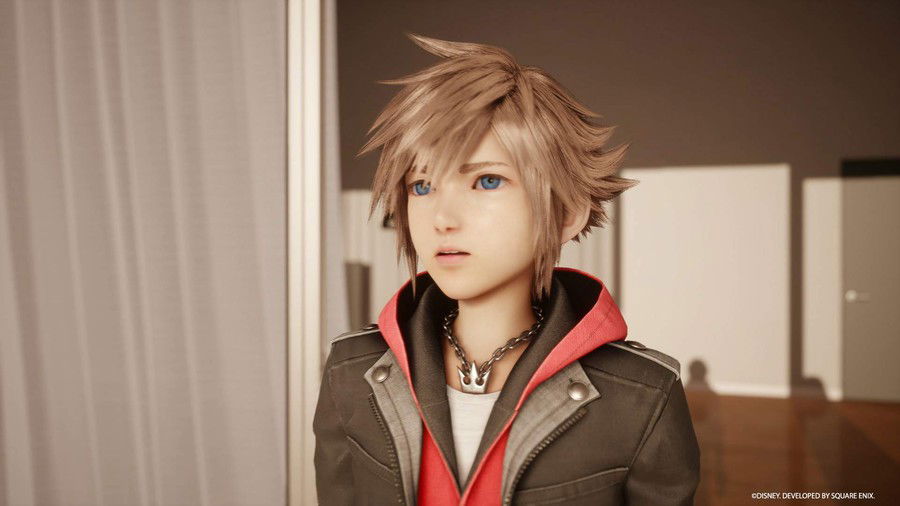
For now, what is left for us to do is wait and keep an eye out for any possible news that has a small chance of appearing at the release of the Kingdom Hearts collection for Steam, announced for June 13th, 2024, and for the new game “Kingdom Hearts: Missing Link”, a new mobile entry in the same molds of its predecessors which promises that we’ll “uncover the ‘Blank Era’ in Kingdom Hearts’ story” and that very recently had a change to its website, now stating that information on the pre-registration will be available soon.
I hope this article has helped you situate yourselves in the chronology and understand where each game fits into the timeline of this franchise so confusing, but that we love to hate on and complain about as we attempt to place every piece in its place and theorize on it.
Thank you for reading, and until the next time!








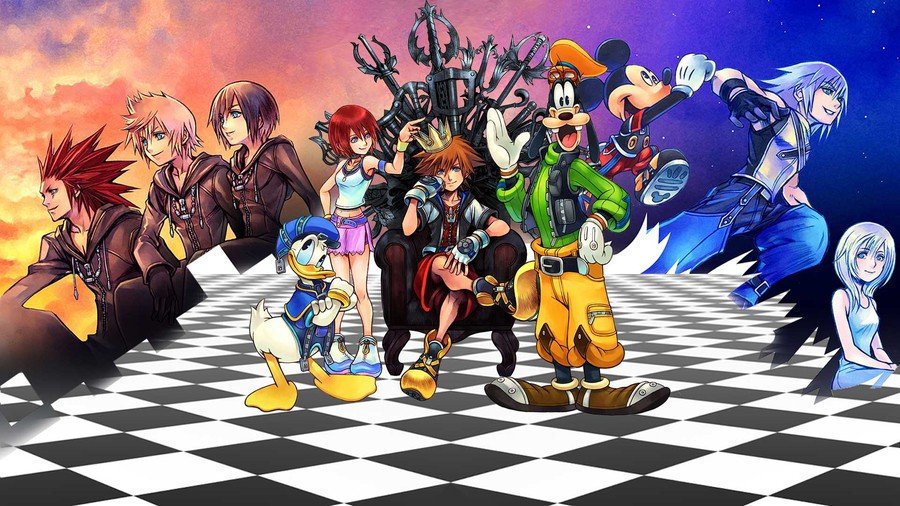
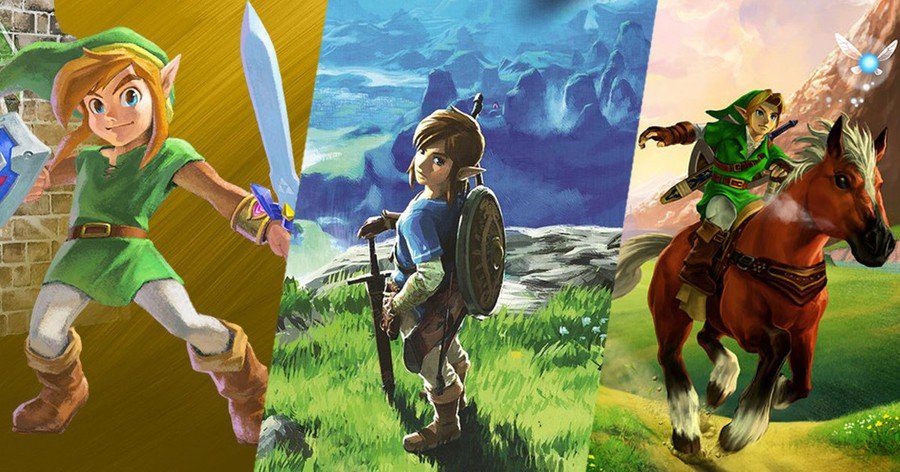



— Comentarios 0
, Reacciones 1
Se el primero en comentar